What to look out for in the World Cup 2022
Published:
The countdown to the World Cup finals is on and we have analysed the data to provide an in-depth guide to the tournament in Qatar.
When is the World Cup 2022?
This year’s World Cup is taking place outside of its traditional summer window and will kick off on November 21.
Many leagues are set to pause their domestic seasons for the competition to take place, which will bring unique challenges for both players and managers.
We have looked back at every result from the six previous tournaments under the current 32-team format for clues that can assist you in your World Cup 2022 betting.
Who will reach the knockout stages?
The last six tournaments have seen a total of 96 teams qualify from the group stage and more than half of them (51) have been European. Five of those competitions were won by a nation from Europe, with Brazil’s triumph in 2002 the exception.
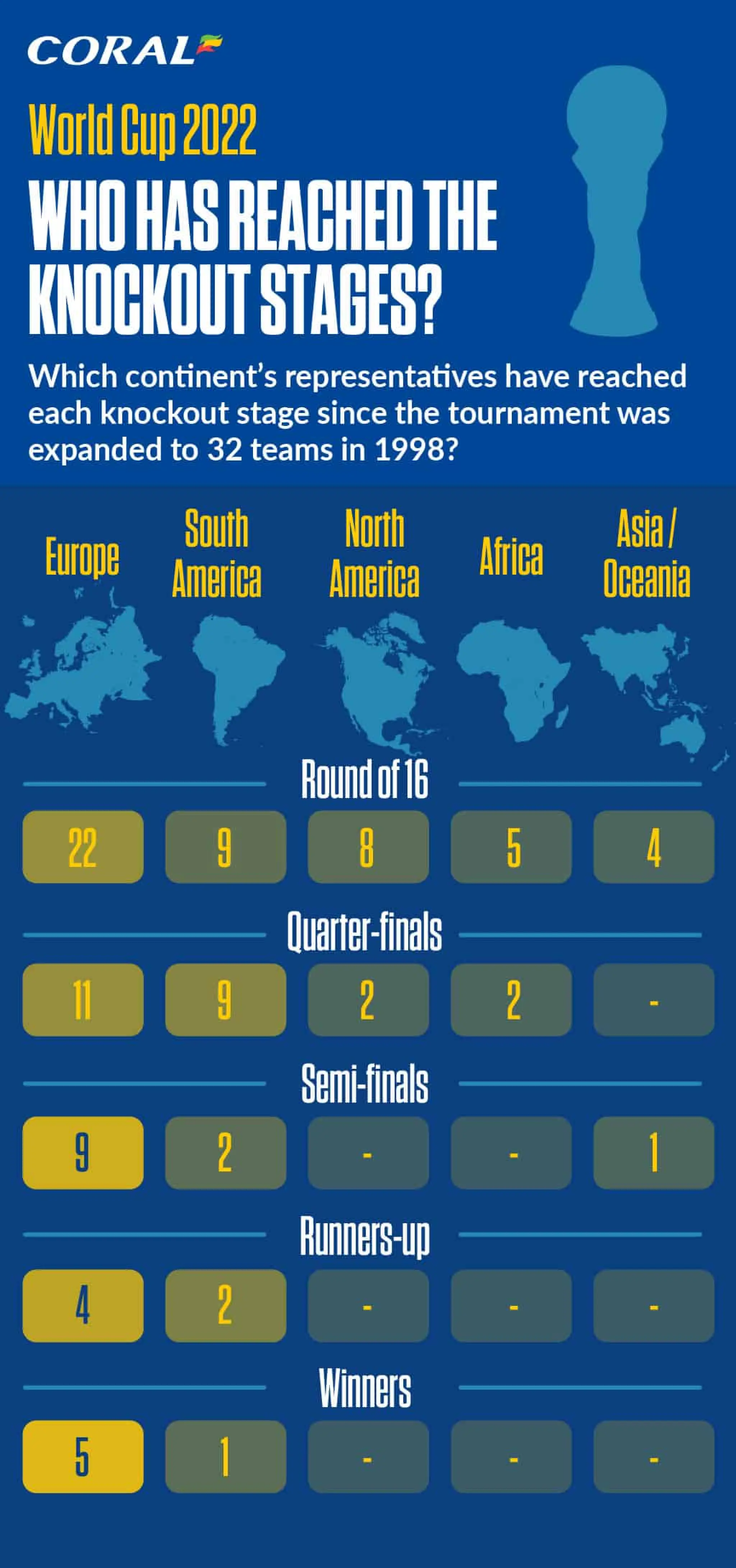
A further 23 teams who reached the Round of 16 – roughly a quarter – were from South America; more than double the next most successful continent. South American nations have been the most successful at navigating the group stage, with over three quarters making it through.
While there have been roughly similar numbers of countries from other continents – such as Africa and Asia – qualifying for the World Cup, a much smaller proportion have extended their stay beyond the initial three rounds of fixtures.
This includes five out of 27 teams from Asia and Oceania, with only one – co-hosts South Korea in 2002 – making it beyond the Round of 16, and seven out of 31 African qualifiers.
Will we see a shock elimination?
The numbers suggest that we should prepare for a couple of shock early exits from the group stage at World Cup 2022.
Since 1998 there have been 14 teams who started a World Cup in the top 10 of the FIFA world rankings but went on to suffer elimination before the knockout phase began. Many of these were established giants: nine of the 14 were in the top five and three were the world’s highest-ranked team at the time.
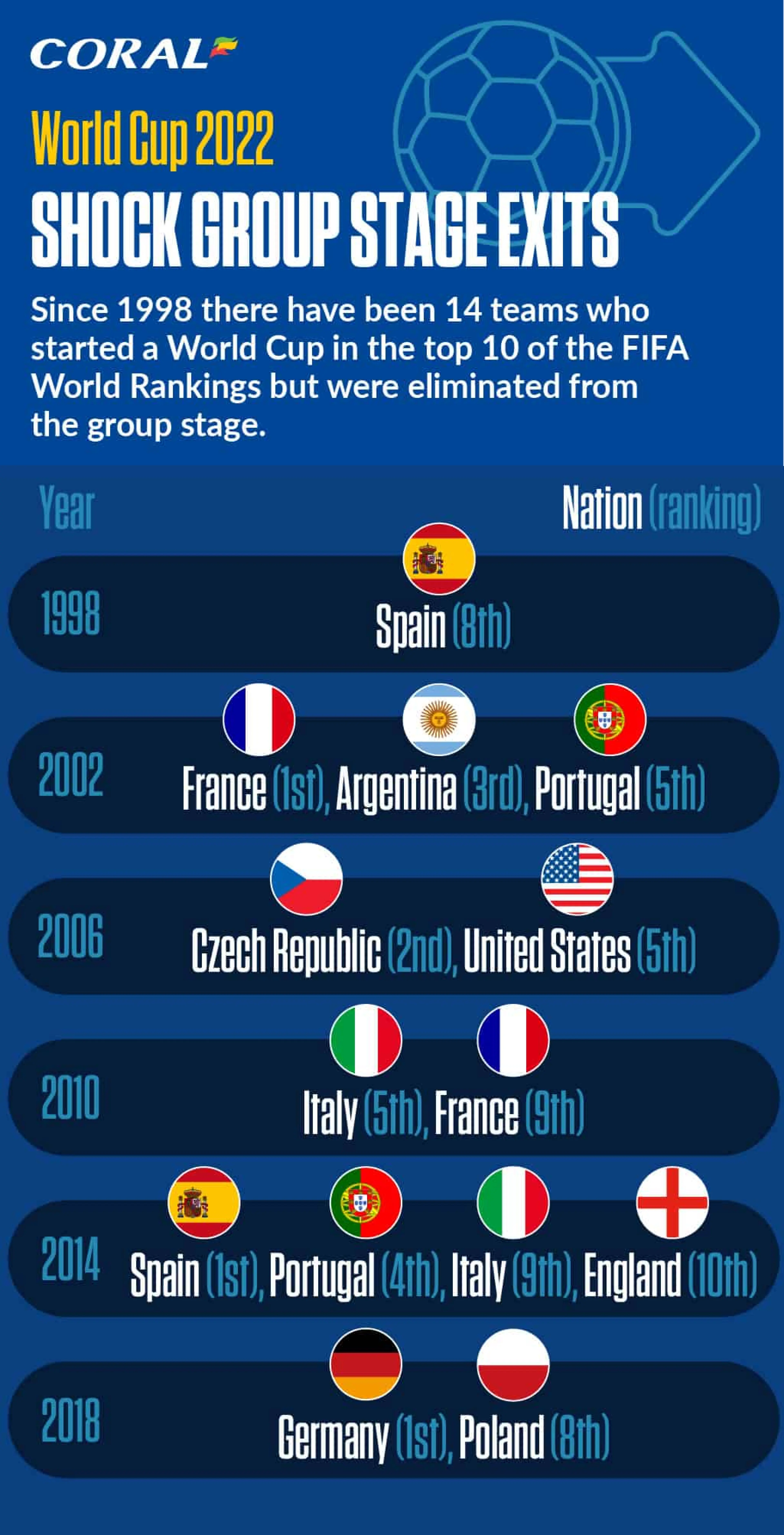
A world number one ranking did not prevent Germany from finishing bottom of Group F in 2018 while four years previously defending champions Spain went home early after finishing third. Both teams lost two of their three group games, winning the other, while 1998 world champions France could only muster a draw as they propped up Group A in 2002.
Of the current top 10, Italy or Portugal – the two most recent European Championship winners – could be at risk this year if they make it to Qatar. Both have endured underwhelming qualifying campaigns and finished second in their group so will have to navigate the playoffs.
Which nations could spring a surprise?
In the 32-team era there have been a total of 94 nations who were outside the top 20 of the FIFA rankings at the start of the tournament. Fewer than a quarter of these (23) went on to qualify for the Round of 16, of which nine made it to the quarter-finals and two to the semi-finals.
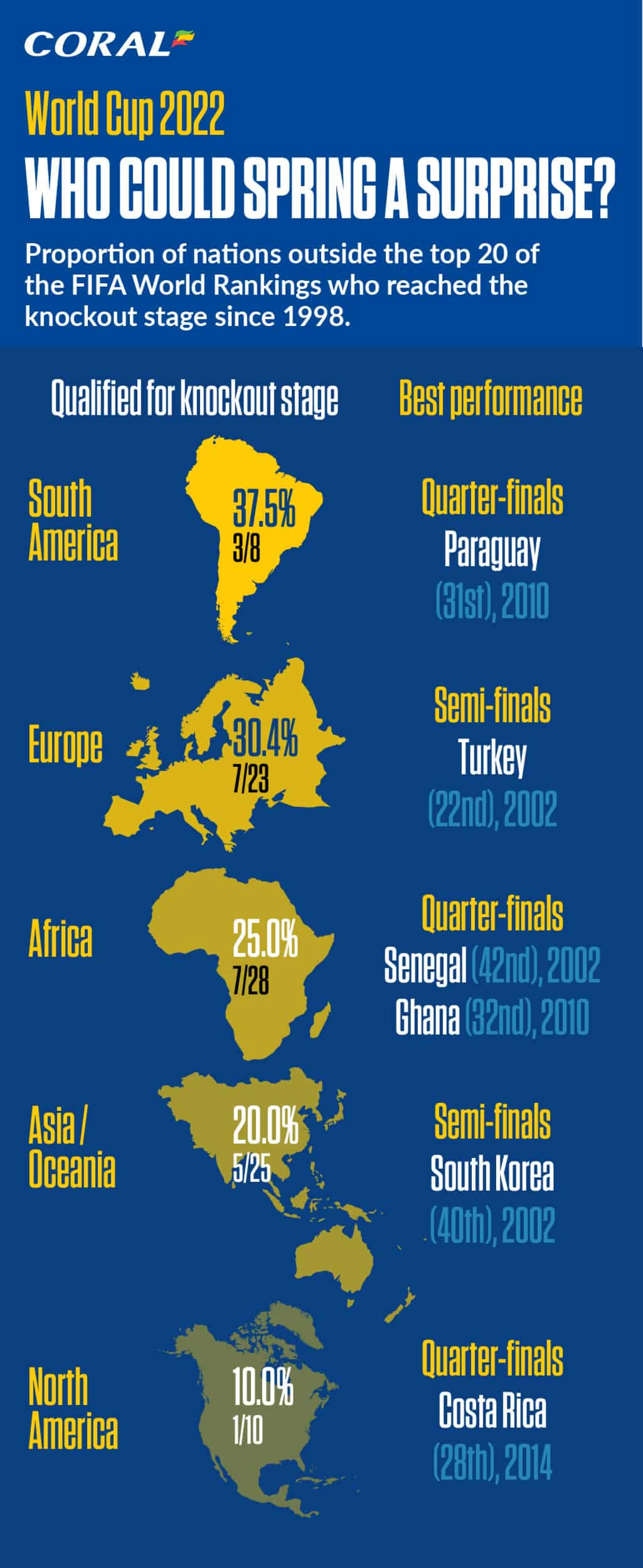
South America is the only continent whose less highly-ranked teams have a better than one-in-three record of qualifying for the knockout stages. While Brazil and Argentina will attract plenty of attention as always, we should be keeping an eye on the other CONMEBOL nations like Colombia as potential dark horses.
How to spot an upset in the making
If a team loses their opening match to a team below them in the world rankings, that’s usually a sign that they will not have a successful tournament. This has happened 17 times since 1998 and only three of the defeated teams recovered to reach the knockout stages.
Spain lost their opening match 1-0 to Switzerland in 2010 but recovered to top the group and only conceded one more goal as they won the tournament. While Uruguay also bounced back from a surprise opening defeat four years later in 2014 and Colombia did likewise in 2018, both were eliminated in the Round of 16.
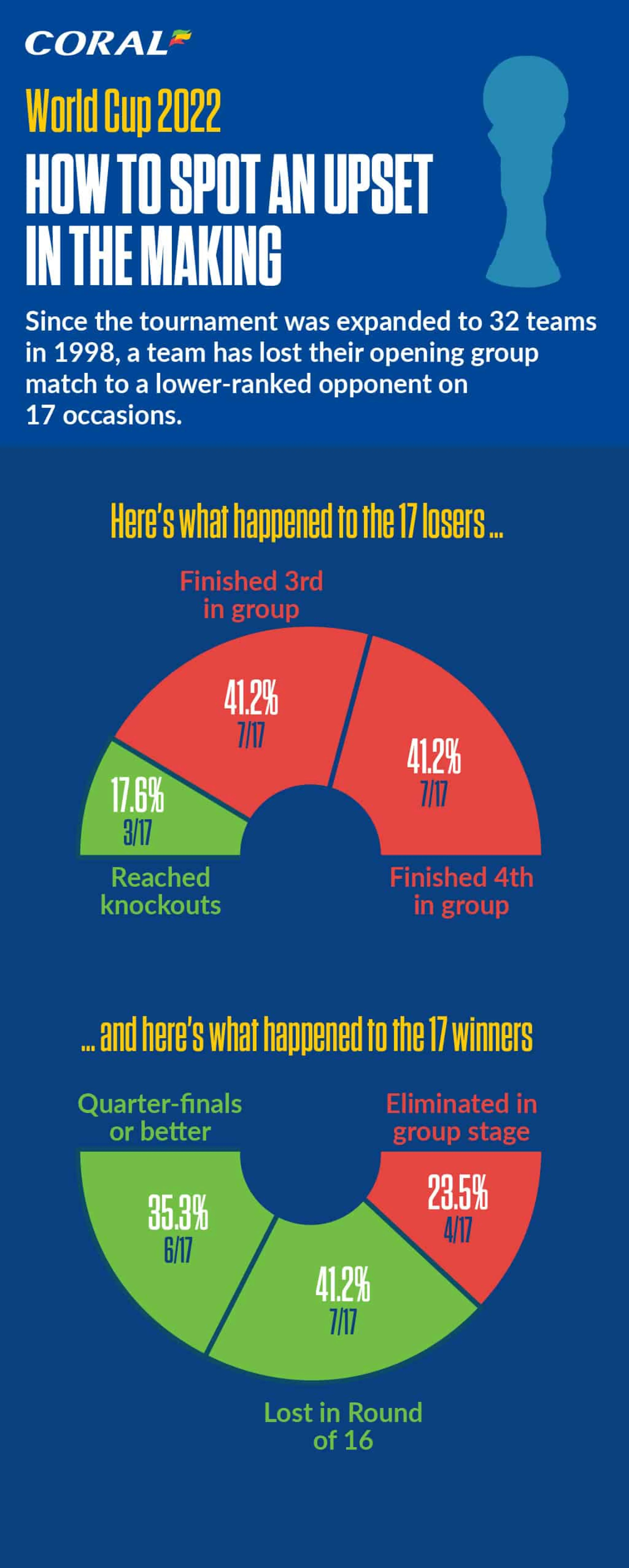
The 17 teams that inflicted those surprising reversals fared much better, with only four failing to get out of their group and six going on to reach at least the quarter-final stage.
Costa Rica’s 2014 run to the last eight is a classic example. Despite being ranked 28th in the world at the start of the tournament, they began with a 3-1 over Uruguay – ranked seventh – before defeating Italy and drawing with England to send both crashing out.
Therefore if we witness any early upsets at the World Cup 2022 it would be foolish to write them off as mere blips.
What can we learn from the group stage?
With only half of the 32 qualified teams eliminated after the group stage, there will still be a wide spread of teams progressing to the Round of 16. Fortunately, even the three group games can tell us plenty about each team’s prospects.
On average across the last six tournaments, teams that fall at the first knockout hurdle have scored 4.4 goals and conceded 3.1, compared to a much healthier balance of 5.5 to 2.1 among those who are eliminated in the quarter-finals.
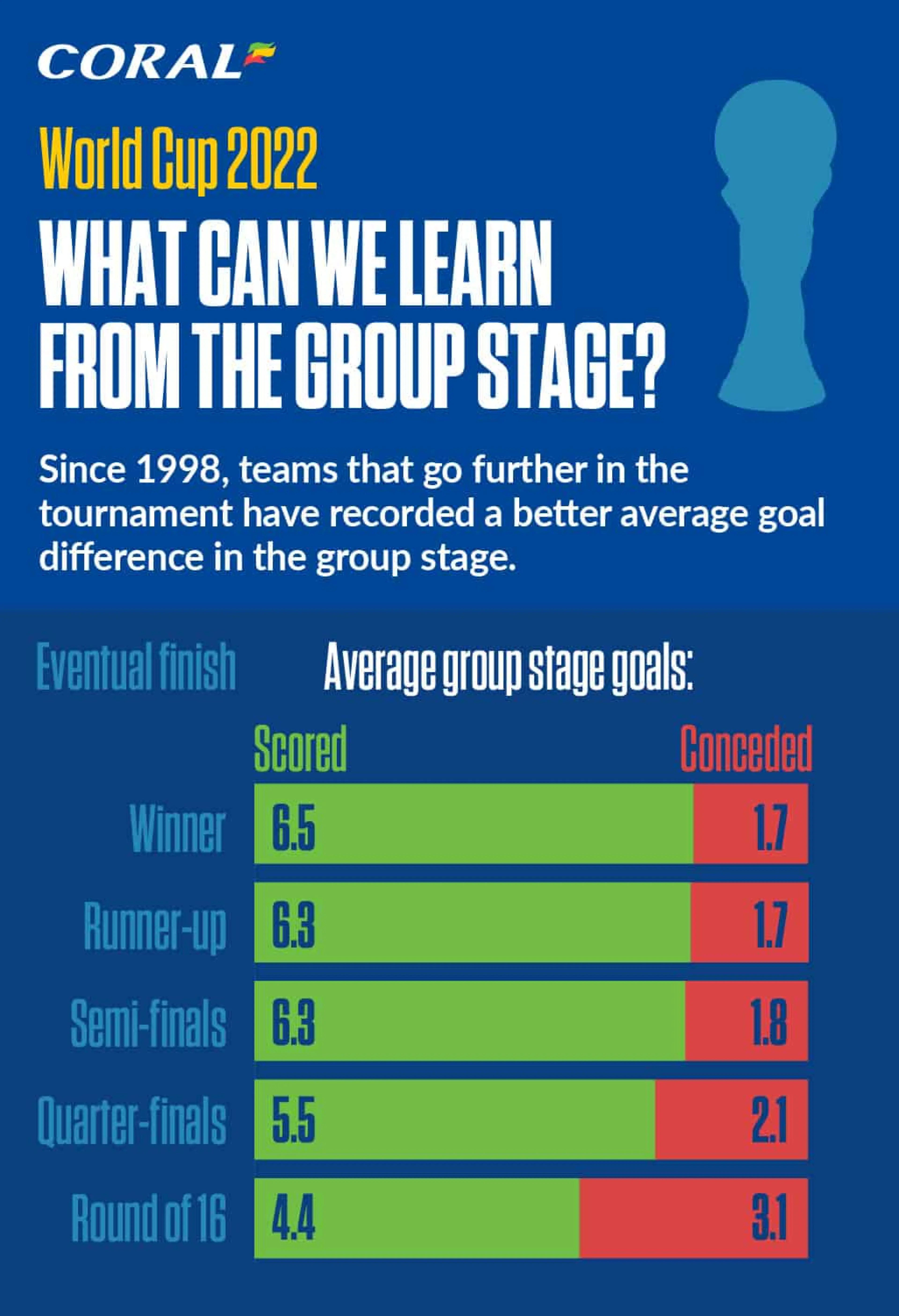
A solid defensive record in group games has been a better predictor of success than a prolific attack. None of the 24 teams to have made it to the semi-finals during this period had conceded more than three goals during the group stage, with 18 shipping two or fewer.









